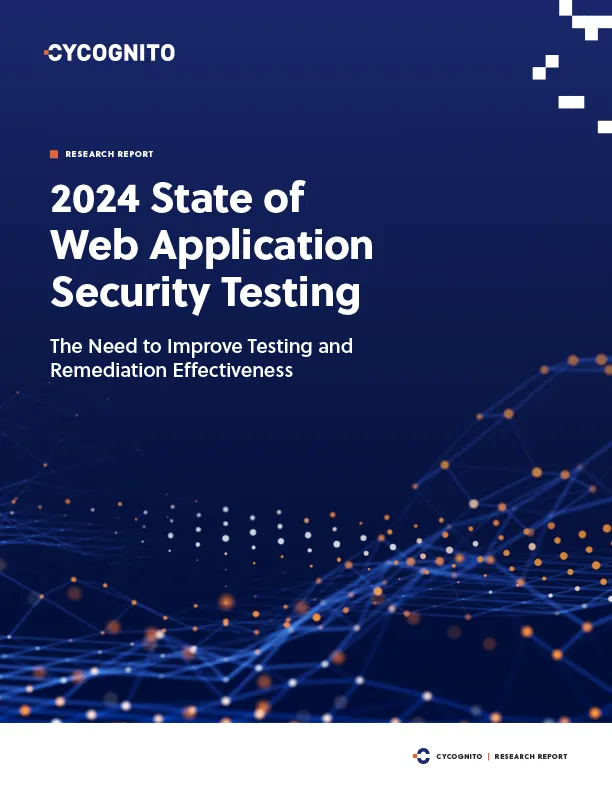6 WAF Cybersecurity Capabilities
While different WAF solutions might have different capabilities, here are the main features provided by most modern WAFs:
1. Rule-Based Traffic Filtering
Rule-based traffic filtering involves analyzing all incoming and outgoing traffic based on a set of rules, which can be tailored to the specific security needs of a web application.
For example, a rule might be set up to block all traffic from a specific IP address or to block requests that include a specific type of payload. This rule-based approach allows for a high degree of precision in identifying and blocking potential threats.
2. Customizable Security Policies
In addition to rule-based traffic filtering, a WAF also offers the ability to create customizable security policies.
For example, a security policy might be set up to require all users to authenticate before accessing certain parts of a web application. Some WAFs even provide built-in authentication mechanisms. Or, a policy might be set up to block all traffic from a specific country, if that country is known to be a source of many cyberattacks.
These customizable security policies allow businesses to take a proactive approach to security, defining their own rules and policies based on their unique risk profiles.
3. Application Profiling and Allowlisting
Application profiling involves understanding the normal behavior of an application in order to detect abnormal activity. It's a proactive way of identifying potential security threats before they cause harm.
Allowlisting involves allowing only approved traffic to access your web applications. This is achieved by creating a list of trusted traffic sources, such as IP address ranges or domains. Any traffic outside of this list is automatically blocked.
4. Rate Limiting and Bot Management
Rate limiting involves limiting the number of requests a user or IP address can make within a certain timeframe. By doing so, it helps prevent denial-of-service (DoS) attacks, which seek to overwhelm your web application with traffic to cause a crash, or brute force attacks that try to cycle through login credentials to gain unauthorized access.
Bot management involves identifying and managing automated web traffic, also known as bots. While some bots are harmless, others can be malicious, carrying out activities such as web scraping, credential stuffing, and automated vulnerability scanning. WAFs can identify bad bots and prevent them from accessing a web application, while allowing legitimate bots like search engine crawlers.
5. SSL/TLS Offloading and Inspection
SSL/TLS offloading and inspection is a feature of WAF security that helps manage encrypted traffic. It involves transferring the processing of SSL/TLS encryption and decryption from your web server to the WAF. This helps improve the performance of your web server by freeing up its resources.
SSL/TLS inspection is a complementary feature that decrypts and inspects encrypted traffic for potential threats. It can help identify hidden attacks that could otherwise bypass your security measures.
6. Integration with Other Security Solutions
WAFs commonly integrate with other security solutions such as Intrusion Detection Systems (IDS), Intrusion Prevention Systems (IPS), and Security Information and Event Management (SIEM) systems. This integrated approach enhances overall security by combining the strengths of each system.
Integration with IDS and IPS allows the WAF to benefit from additional layers of network monitoring and protection. For example, while the WAF focuses on application-layer threats, the IDS can monitor network traffic for signs of suspicious activity, and the IPS can actively block identified threats.
Similarly, integration with SIEM systems can help centralize the management of security events and logs. SIEM systems aggregate and analyze data from various sources, including WAFs, to identify broader cyber threat patterns. This integration enables faster detection of complex attacks and improves incident response times.

Tips from the Expert
Rob Gurzeev
CEO and Co-Founder
Rob Gurzeev, CEO and Co-Founder of CyCognito, has led the development of offensive security solutions for both the private sector and intelligence agencies.
In my experience, here are tips that can help you better optimize your Web Application Firewall (WAF) strategy:
- Create a feedback loop from incident response: Integrate WAF logs with your incident response team’s post-mortem process. Analyze blocked and allowed traffic post-attack to fine-tune WAF rules and improve detection accuracy.
- Utilize deception techniques for early detection: Set up honeypot services behind your WAF to attract and log attackers. This lets you study adversary behavior and build early-warning mechanisms for more targeted WAF rule creation.
- Integrate WAF with DevOps pipelines for early risk mitigation: Embed your WAF security checks in your CI/CD pipeline. By running simulated attacks during application deployment, you can adapt WAF rules before new web app versions go live.
- Rotate SSL certificates to counter SSL/TLS attacks: Regularly rotate SSL certificates and update your WAF to avoid attacks leveraging old certificates. This ensures continued SSL/TLS offloading security without relying on outdated encryption.
- Monitor bot traffic continuously: Even after configuring bot management, attackers constantly evolve their techniques. Use real-time bot traffic analysis tools integrated with your WAF to stay updated on new bot behaviors and ensure legitimate bots like search engines aren’t blocked inadvertently.
Tips for Effectively Implementing WAF Security in Your Organization
Here are a few best practices that can help you make the most of WAF security solutions in your organization.
Regularly Update and Review Security Rules
To maintain effective security, it's crucial to keep the WAF's security rules up-to-date. Cyber threats evolve rapidly, and security rules must be revised regularly to address new vulnerabilities and attack patterns. Regular updates ensure that the WAF is equipped to identify and block the latest threats.
Additionally, reviewing existing rules is important to minimize false positives and ensure legitimate traffic is not inadvertently blocked. This process might involve analyzing traffic logs, adjusting sensitivity levels, and customizing rules to align with changing web application functionalities or usage patterns.
Conduct Periodic Security Audits and Reviews
Periodic security audits and reviews are essential to identify potential gaps in the WAF’s protection. These audits should include a comprehensive examination of the WAF's configuration, the effectiveness of its rules, and its integration with other security systems.
Regular reviews enable organizations to assess the WAF's performance in real-world scenarios, ensuring that it is effectively protecting against actual threats. These audits can also help in understanding user behavior patterns, refining security policies, and ensuring compliance with relevant regulations and industry standards.
Enable Real-time Monitoring and Alerts
Enabling real-time monitoring and setting up alerts is vital for immediate detection and response to potential security incidents. Real-time monitoring allows security teams to track all traffic passing through the WAF and quickly identify suspicious activities.
Customizable alerts can be set up based on specific criteria, such as repeated login failures, traffic spikes, or attempts to access restricted areas. These alerts enable security teams to respond promptly to potential threats, minimizing the risk of a data breach or other security incident.
Integrate WAF with Threat Intelligence
Integrating the WAF with threat intelligence feeds enhances its capability to preemptively block emerging threats. Threat intelligence involves gathering and analyzing information about new and existing cyber threats from various sources.
By integrating this intelligence, the WAF can be updated in real-time with information about new attack vectors, malware signatures, and IP addresses associated with malicious activities. This proactive approach allows the WAF to secure web applications against even the most recent and sophisticated threats.
Enhancing WAF Security with CyCognito Attack Surface Management
Web applications are an essential part of the external attack surface and WAFs are an excellent starting point to protect these vital assets, but WAFs still need to be continuously monitored, tested, and adjusted to provide complete coverage.
With CyCognito Automated Security Testing (AST), your organization can continuously actively test web applications for common vulnerabilities, identify which assets are protected by WAFs, and prioritize assets for remediation. CyCognito’s Exploit Intelligence module goes even farther, providing integrated tailored threat intelligence across your entire attack surface.
The CyCognito platform:
- Maps and discovers your entire external attack surface, ensuring that no web applications are left unmonitored.
- Assesses all assets for security protections and vulnerabilities, identifying web applications that are missing basic protections, like WAFs.
- Continuously tests your assets, prioritizes the most critical issues based on severity and business context, and provides remediation guidance.
- Provides real-time integrated threat intelligence, ensuring your risk assessment is always current and incorporates the latest attack vectors and cyber threats.
CyCognito identifies and tests your entire external attack surface, including web applications and WAFs, automatically, continuously, and at scale using CyCognito’s enterprise-grade testing infrastructure.
Learn more about CyCognito.






 Complimentary Report
Complimentary Report